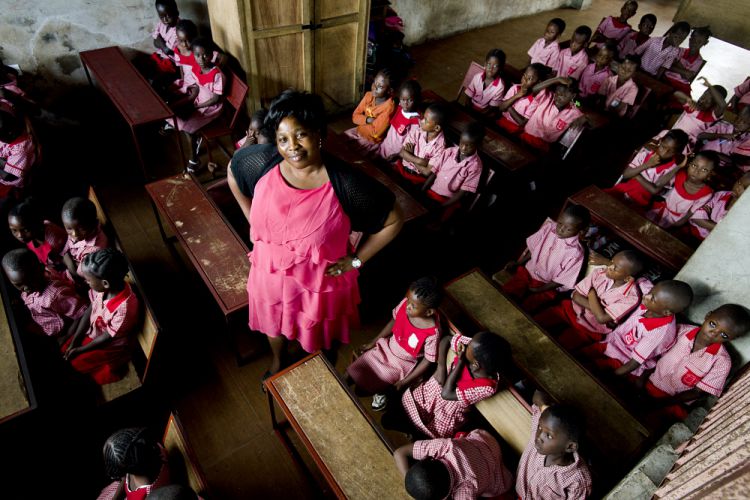Send to a friend
The details you provide on this page will not be used to send unsolicited email, and will not be sold to a 3rd party. See privacy policy.
[LONDON] Giving cash to children or their families is the most effective way to boost school attendance, a meeting has heard.
Out of about 20 types of development interventions in 52 low- and middle-income countries, “cash transfer programmes have the most substantial and consistent beneficial effects on school participation”, says a review presented during the 3ie London Evidence Week in the United Kingdom last week (11-15 April).
“The real world is messy and education is hard to move, cash transfers have shown the biggest results because they are easiest to implement.”
Elizabeth King, 3ie
The review, carried out by NGO the International Initiative for Impact Evaluation (3ie), compares how different kinds of intervention affect school participation and learning. Some of the reviewed programmes directly targeted children, for example by offering individual merit-based scholarships or deworming programmes to improve their health.
Other interventions included changes at the level of teachers, schools or the broader education system, explained lead author Birte Snilstveit, an evaluation specialist at 3ie in London.
Cash transfers belong to what the review calls “household-level interventions”: a transfer of money to children or their families, either given unconditionally or subject to compliance with a certain goal.
For instance, a cash transfer programme in Malawi in 2008 and 2009 awarded girls and their families US$10 a month — about a tenth of a household’s monthly budget — to encourage them to attend school, said Ephraim Chirwa, a University of Malawi economist who presented the project’s results at the event.
To allow researchers to assess different interventions, some families only received cash if girls attended school at least 80 per cent of the time, while others received money without conditions and a third group received no money. After several years, researchers found that conditional cash transfers led to “large and durable improvements” in schooling, especially among the most disadvantaged girls.
3ie’s review included 50 studies referring to 38 cash transfer programmes in different countries. It found that in most places they improved school enrolment and attendance, cut school dropout rates and increased student completion.
But the review showed that cash transfers only made “limited improvements” to learning outcomes, such as maths and language skills, said Snilstveit.
The authors found consistent evidence that ‘structured pedagogy’ interventions — programmes that provide teachers with training and materials — improve learning outcomes. But using computers to support children’s learning is largely ineffective, they say.
“The real world is messy and education is hard to move,” said Elizabeth King, a member of 3ie’s board of commissioners. “Cash transfers have shown the biggest results because they are easiest to [implement].”The 3ie team screened about 89,000 paper abstracts and 2,000 full papers, and whittled the evidence down to 216 interventions and 238 studies.
While King praised the review as a “wonderful effort”, she said policymakers would find it hard to draw clear recommendations from its more than 900 pages, which describe a broad range of interventions with modest impact.
A summary report of the review is scheduled to be published in June.
References
Birte Snilstveit and others Interventions for improving learning outcomes and access to education in low- and middle-income countries: a systematic review (3ie, December 2015)














